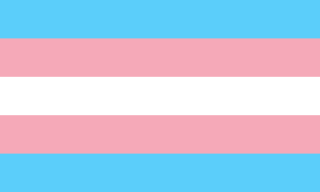
The United States Food and Drug Administration is a federal agency of the Department of Health and Human Services. The FDA is responsible for protecting and promoting public health through the control and supervision of food safety, tobacco products, caffeine products, dietary supplements, prescription and over-the-counter pharmaceutical drugs (medications), vaccines, biopharmaceuticals, blood transfusions, medical devices, electromagnetic radiation emitting devices (ERED), cosmetics, animal foods & feed and veterinary products.

The False Claims Act (FCA) is an American federal law that imposes liability on persons and companies who defraud governmental programs. It is the federal government's primary litigation tool in combating fraud against the government. The law includes a qui tam provision that allows people who are not affiliated with the government, called "relators" under the law, to file actions on behalf of the government. This is informally called "whistleblowing", especially when the relator is employed by the organization accused in the suit. Persons filing actions under the Act stand to receive a portion of any recovered damages.

The Pure Food and Drug Act of 1906, also known as Dr. Wiley's Law, was the first of a series of significant consumer protection laws which was enacted by Congress in the 20th century and led to the creation of the Food and Drug Administration. Its main purpose was to ban foreign and interstate traffic in adulterated or mislabeled food and drug products, and it directed the U.S. Bureau of Chemistry to inspect products and refer offenders to prosecutors. It required that active ingredients be placed on the label of a drug's packaging and that drugs could not fall below purity levels established by the United States Pharmacopeia or the National Formulary.

Generally recognized as safe (GRAS) is a United States Food and Drug Administration (FDA) designation that a chemical or substance added to food is considered safe by experts under the conditions of its intended use. An ingredient with a GRAS designation is exempted from the usual Federal Food, Drug, and Cosmetic Act (FFDCA) food additive tolerance requirements. The concept of food additives being "generally recognized as safe" was first described in the Food Additives Amendment of 1958, and all additives introduced after this time had to be evaluated by new standards. The FDA list of GRAS notices is updated approximately each month, as of 2021.

The United States Federal Food, Drug, and Cosmetic Act is a set of laws passed by the United States Congress in 1938 giving authority to the U.S. Food and Drug Administration (FDA) to oversee the safety of food, drugs, medical devices, and cosmetics. The FDA's principal representative with members of congress during its drafting was Charles W. Crawford. A principal author of this law was Royal S. Copeland, a three-term U.S. senator from New York. In 1968, the Electronic Product Radiation Control provisions were added to the FD&C. Also in that year the FDA formed the Drug Efficacy Study Implementation (DESI) to incorporate into FD&C regulations the recommendations from a National Academy of Sciences investigation of effectiveness of previously marketed drugs. The act has been amended many times, most recently to add requirements about bioterrorism preparations.
FDA v. Brown & Williamson Tobacco Corp., 529 U.S. 120 (2000), is an important United States Supreme Court case in U.S. administrative law. It ruled that the Food, Drug, and Cosmetic Act did not give the Food and Drug Administration (FDA) the authority to regulate tobacco products as "drugs" or "devices." This was later superseded by the Family Smoking Prevention and Tobacco Control Act, which granted the FDA the authority to regulate such products.

In patent law, the research exemption or safe harbor exemption is an exemption to the rights conferred by patents, which is especially relevant to drugs. According to this exemption, despite the patent rights, performing research and tests for preparing regulatory approval, for instance by the FDA in the United States, does not constitute infringement for a limited term before the end of patent term. This exemption allows generic manufacturers to prepare generic drugs in advance of the patent expiration.
The United States Food and Drug Administration (FDA) Office of Criminal Investigations (OCI) provides the FDA with a specific office to conduct and coordinate its criminal investigations.

Eli Lilly and Company v. Medtronic, Inc., 496 U.S. 661 (1990), is a United States Supreme Court case related to patent infringement in the medical device industry. It held that 35 U.S.C. § 271(e)(1) of United States patent law exempted premarketing activity conducted to gain approval of a device under the Federal Food, Drug, and Cosmetic Act from a finding of infringement.
Heckler v. Chaney, 470 U.S. 821 (1985), is a decision of the Supreme Court of the United States which ruled that a federal agency's decision to not take an enforcement action is presumptively unreviewable by the courts under section 701(a)(2) of the Administrative Procedure Act (APA). The case arose out of a petition to the Food and Drug Administration (FDA) by a group of death row inmates, who sought to have the agency act against states' plans to execute them by lethal injection. The FDA declined to interfere, asserting that it had no jurisdiction and would choose not to act even if it did. The inmates appealed the refusal to the U.S. District Court for the District of Columbia, which granted summary judgment to the government on the grounds that the nonenforcement action was unreviewable. The petitioners then appealed the summary judgment to the U.S. Court of Appeals for the D.C. Circuit. The Court of Appeals held that the FDA's action was reviewable and that its denial was "arbitrary and capricious". The Supreme Court unanimously reversed the appeals court and declared in an 8–1 decision that agency nonenforcement decisions were presumptively unreviewable.
FDA preemption is the legal theory in the United States that products licensed or otherwise approved for use by the Food and Drug Administration (FDA) are exempt from various state efforts to preclude their use. It has been raised as a counter to both direct efforts to ban such products, and as a defense against tort claims regarding such products. The doctrine hinges on the assertion of Congressional intent to designate FDA as the national clearinghouse for determinations of the safety of pharmaceutical products, and the Supremacy Clause of the Constitution of the United States placing federal law over state law.
Wyeth v. Levine, 555 U.S. 555 (2009), is a United States Supreme Court case holding that Federal regulatory approval of a medication does not shield the manufacturer from liability under state law.

The regulation of food and dietary supplements by the U.S. Food and Drug Administration is a process governed by various statutes enacted by the United States Congress and interpreted by the U.S. Food and Drug Administration ("FDA"). Pursuant to the Federal Food, Drug, and Cosmetic Act and accompanying legislation, the FDA has authority to oversee the quality of substances sold as food in the United States, and to monitor claims made in the labeling about both the composition and the health benefits of foods.
United States v. Dotterweich, 320 U.S. 277 (1943), was a United States Supreme Court case in which the Court upheld strict, vicarious liability for the president of a company convicted of a public welfare offense.
Los Angeles County v. Humphries, 562 U.S. 29 (2010), is a decision by the Supreme Court of the United States that clarified one of the requirements for imposing liability on a municipality for violations of a federal right, in lawsuits brought under Section 1983 of the Civil Rights Act of 1871.
The Food and Drug Administration is a federal agency of the United States, formed in 1930.
Buckman Co. v. Plaintiffs Legal Comm., 531 U.S. 341 (2001), was a United States Supreme Court case decided in 2001. The case concerned whether the FDCA, a federal statute, pre-empted a state-law fraud-on-the-FDA claim. Although finding it on different grounds, the Court decided to reject the lawsuit attempt.
Mutual Pharmaceutical Co. v. Bartlett, 570 U.S. 472 (2013), is a decision by the Supreme Court of the United States holding that generic drug manufactures cannot be held liable under state law for not adequately labeling medication when federal law prohibits them from changing the label from the original brand name drug.
POM Wonderful LLC v. Coca-Cola Co., 573 U.S. 102 (2014), was a United States Supreme Court case that held that a statutory private right of action under the Lanham Act is not precluded by regulatory provisions of the Food, Drug, and Cosmetic Act.
Akamai Technologies, Inc. v. Limelight Networks, Inc., 797 F.3d 1020, is a 2015 en banc decision of the United States Court of Appeals for the Federal Circuit, on remand from a 2014 decision of the U.S. Supreme Court reversing a previous Federal Circuit decision in the case. This is the most recent in a string of decisions in the case that concern the proper legal standard for determining patent infringement liability when multiple actors are involved in carrying out the claimed infringement of a method patent and no single accused infringer has performed all of the steps. In the 2015 remand decision, the Federal Circuit expanded the scope of vicarious liability in such cases, holding that one actor could be held liable for the acts of another actor "when an alleged infringer conditions participation in an activity or receipt of a benefit upon performance of a step or steps of a patented method and establishes the manner or timing of that performance." In addition, the court held that where multiple "actors form a joint enterprise, all can be charged with the acts of the other[s], rendering each liable for the steps performed by the other[s] as if each is a single actor."






